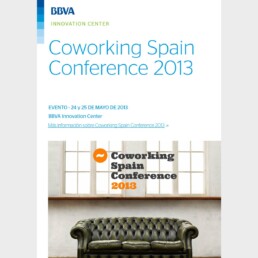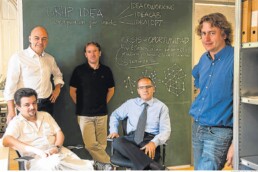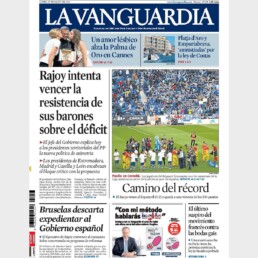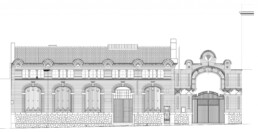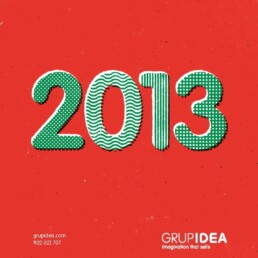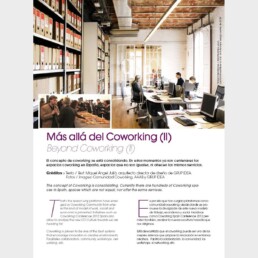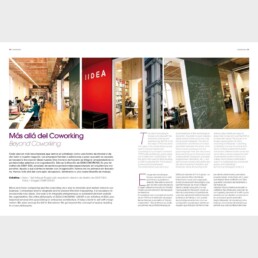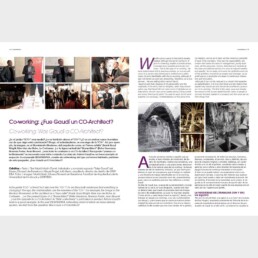Learn from the EAMES
In today´s post we want to invite you to reflect, and for this we have two comments around Charles and Ray Eames. The first is the viewing of the report that Oscar Guayabero made in the IDEAPIKAPIKA of the past 27/03/2013:
https://vimeo.com/223104870
The idea behind the talk of Oscar Guayabero, was to inquire into the strategies of the Eames, understanding Design as communication. For this he focused in three concepts: Circus, Cinema and War Rooms.
When they ask Charles Eames "¿What is design?", He answered with unconnected sentences but with a global sense that resembled: "Design is a plan to place elements in the best way to attain a particular purpose. Finally everything connects: people, ideas, objects, taking into account the influence of those that were before us. The quality of the connections is the key to the quality of the final design".
One of the bases of his work was to understand everything: objects, spaces, films, etc. like a communication project following a concrete strategy: "When you overload the user with information, the menu of options expands and new connections are established”.
For the Eames, design was not only a profession, but a way of life. For the Eames, design was to give. The work of the Eames, did not finish when they built a building but the documentation formed part of the project.Read more
"But… ¿What is design (of product)?"
In GRUP IDEA we design furniture, lighting or any product of industrial line. We perform the project management of the production phase and we integrate the customer in the process adding value and final innovation.
But ... What is design (of a product)? It is a question with an answer that is not simple. So below you can read a thoughtful post by Miquel Angel Juliá, partner and Design Director of GRUP IDEA, appeared in the magazine I-Candela.
As a teacher, there are always questions, or rather answers that we have to confront that command respect. If you are dealing with a Post Graduate in Product Design in which the vast majority of students are architects like us… so more so. If architects are still asking themselves what architecture is, just imagine when we ask ourselves… ¿What is design (of product)?
In the same way that Regis Mckenna said that "Marketing is everything, and everything is marketing", it could be said that design is everything, and everything is design. Almost everything "artificial "" that surrounds us and facilitates our quality of life has been designed. We only have to know how to observe. Objects, spaces, buildings, systems, services, experiences are designed. Design is the car that we drive, the clothes pin we use, the I-PAD, the clip to attach papers, the chair we seat on… The truth is that never before had we accumulated so many objects in our daily life. We are totally under the influence of a consumer society.
The literal translation of "PRODUCT DESIGN" is DESIGN OF PRODUCTS, but it is a definition that falls short. The definition would have to include, among other things, the generation of ideas, development of concepts, prototyped and manufacture of products, implementation of products/spaces/services… A "Product Designer" touches different activities like marketing, direction or management, design, engineering… It also combines art, craftsmanship, science, technology, trade…It has to know how to act in an interdisciplinary mode…ergonomics,graphics, illumination, fashion, sustainability
We apply the term DESIGN incorrectly and excessively. We speak of "design lofts", “design drugs"… even of "design smiles". The media uses DESIGN in a frivolous and superficial way, like an adjective, distorting and therefore underrating its original meaning. Thus, design is linked to modern, expensive and useless objects. As an anecdote, I will say that the known manufacturer of kitchens BULTHAUP, forbids the use of the word DESIGN in his advertising.
We have to talk about the verb DESIGN, understood as the abstract activity of a project previous to its production, or as a subject, DESIGN understood as result.
In our case DESIGN and PROJECT could be understood as synonymous. It is here where the activity of architects and designers meet. Deep down the difference between both disciplines, in a very simplified way, could be considered a mere factor of scale. Design is to find solutions.
DESIGN, as we conceptualize it presently, seems to be linked only to the industrial world, but it is not so. We also have to be careful not to confuse concepts like DESIGN and "DESIGN MANAGEMENT". It is one thing to DESIGN and another one to MANAGE the DESIGN.Design is "a plan to arrange elements in a way as to achieve the performance intended in the best possible way". Charles Eames
"Design means to find new ways to negotiate the different components of the things that we usually use so they become more manageable, more comfortable and more comprehensible". André Ricard
“Design (…), planning of the artificial world, that is to say, of all the products done by human beings: material objects, verbal and visual communication, services and organized activities, complex systems and surroundings to live, work, play and learn in”. Isabel Campí
Although if we asked Jorge Wagensberg, scientific director of the Foundation "the Caixa" and creator of the current CosmoCaixa, he would speak to us also about "natural design".
"In human design, first there is the problem and then the solution. On the other hand, in natural design first there is the solution and after, a lot of time after, the problem." Jorge Wagensberg
But… ¿What is product? The term PRODUCT, as well as the term DESIGN, is used in an excessively broad sense and in a not very clear way. A savings account, a life insurance,…are defined as products. Just remember when the controversial publicist Risto Mejilde addressed a contestant of Operation Triumph:
"I do not care how you have sung, what interests me is if there is a product behind that I can sell . I see a voice and a person but, the truth is, I do not see a product."Risto Mejilde
But… ¿How is a good design? It is helpful to remembered what Oscar Guayabero said during the “Any del Disseny” (2003), coinciding with the centenary of the creation of the FAD:
"It has to fulfill four requirements.
First: it has to be accessible to all users.
Second: it has to serve the industry. The industrialists have to be convinced that the design is not an added value and the designer has to be present from the very conception of the product.
In third place, good design has to be sustainable: objects have a curriculum behind, a full history of things that have happened to make it what it is. The smaller it is, the better; fewer resources have been used in its production, less energy, etcetera.
And finally, it has to have an emotional component, because the objects that surround us have to brighten our view and help us be happier."Oscar Guayabero.
The logo chosen for the “Any del Disseny” was a simple clip, a small object that Juli Capella defines like "a master piece of design: fifteen centimeters of wire intelligently bent".
The Clip, itself, is a simple idea, effective and cheap that allows joining several pages, pinning them in a reversible way without damaging them. Its origin traces back to the 19th century, in USA, with a patent of Samuel B. Fay (1867). Its design allowed attaching labels to garments without damaging them. Later the Norwegian Johan Vaaler would patent his model with rectangular form (1899), although the British company Glem Manufacturing Company (1870) was already producing another model, the one that made it to our days in the shape of a tight loop. The model known today is a simple wire bent in relation to 3 different diameters. No only were the different models patented but so was the machinery that allowed the bending and cutting of the wire without breaking it. Presently, the Swedish word GLEM, means CLIP…
As you see, the question is still there… ¿What is design (of a product)?
Miquel Àgel Julià, arquitecto. Director de diseño de GRUP IDEA.
The Grup Idea Design Studio opens in Mexico City and Paris.
Published on May 27, 2013 in La Vanguardia.
The architectural firm specializing in interior design of shops and bank offices has started its expansion with offices in Mexico City and Paris. In both cases, to accompany its customers.
The Grup Idea Design Studio opens in Mexico City and Paris.
Grup Idea, the architectural firm specializing in retail and banking based in Barcelona, has strengthened its international position with the opening, at the beginning of this year, of two new offices, one in Mexico City and the other in Paris. We are interested in the growth of the Mexican market and we are there to help customers, who already know us like Nike, Guess or Bershka, get established; the same thing is happening in France. This is not a consequence of not having projects here but of the brands that we already work for opening up new markets. We want to be close to them to offer a good service", explains Lluís Saiz, partner of the Design Studio.
Founded in 1996 in Barcelona, the firm seeks, through the design of spaces, to transmit the values of the brands of the companies and thereby help them to increase their sales and productivity. "We want to contribute to the revitalization of trade, and the optimization and improvement of the productivity of corporate offices and buildings," indicates Saiz.
The firm, whose partners are Artur Ortiz, Alejandro Mora, Rodolfo Pérez, Miquel Ángel Julià and Lluís Saiz, works with three types of clients: banks, Retail and corporate offices. Depending on the project, they are responsible for the implementation of the design in the spaces and in the direction of work in some cases.
For this year 2013, Idea already has orders from Footlocker for stores in Spain and France, and for the store design of the Italian brand Kiko Cosmetics. In 2012 they invoiced 1.5 million euros and for this year, they expect to maintain the same turnover.
GRUP IDEA visit “Escola d'Art i Disseny de la Diputació” of Reus
Roundtable with students about COWORKING, CODESIGN, INTERNATIONALIZATION...
Jordi Bergadà, architect (Professor of introduction of projects for 1º), Xavi Monje, architect (Professor of PIDOD, projects and management of works decoration for 2º) and Alexia Buyo, Interior Designer (teacher of introduction of project, strategy and management for 2 °) with Miquel Àngel Julià, architect (Design Director of GRUP IDEA).
“Most of the spaces where people expend more hours are spaces that we call work. And with this activity we want to propose a solution, one of these company projects or creative community, that we believe that enriches the professional world, sharing and interacting with other activities in the sector and where at the same time coexist similar concerns. We call them COWORKING. Where we work, we met, we exchanged experiences, projects, activities and synergies, in the same common space"
PROJECTS INTRODUCTION: a COWORKING in St. Serapi Center.


